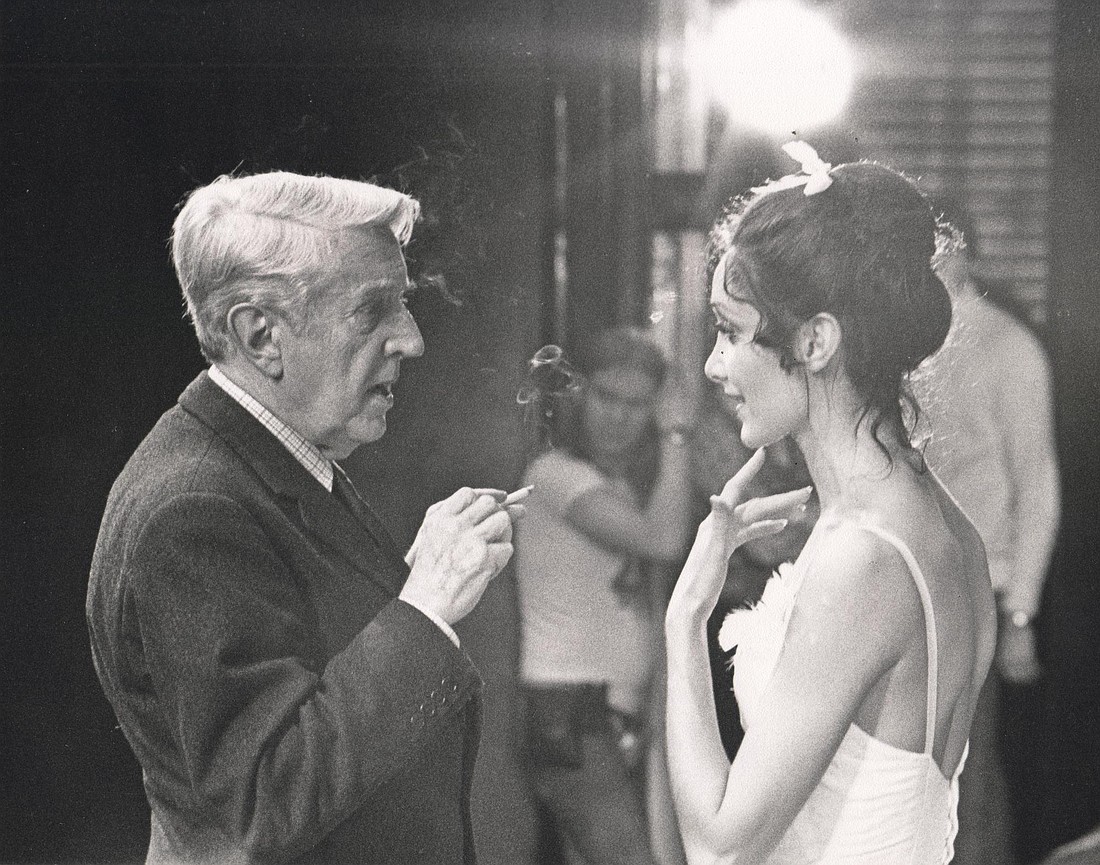- May 6, 2025
-
-
Loading

Loading

At first interpretation, Sarasota Ballet’s opening program for 2020, titled “Redefined Movement,” might be construed to be meant as a primer on the evolution of ballet.
After all, it will open with Sir Frederick Ashton’s 1933 “Les Rendezvous,” an example of classical ballet, followed by the company premier of Paul Taylor’s “Brandenburgs,” from 1988, which is considered to typify Taylor’s approach to modern dance. The program then finishes with Domenic Walsh’s “I Napoletani,” from 2007, which takes a neoclassical approach in its depiction of life in Italy.
But it would be a mistake to interpret the program as a timeline of ballet’s evolution. That’s simply not the case, says Sarasota Ballet Assistant Director Margaret Barbieri, who this year is marking the 50th anniversary of becoming a principal dancer at London’s Royal Ballet.
“I don’t know if you could go, ‘Oh, Brandenburgs,’” Barbieri says, “if you can watch it and say, ‘Well, that was done in 19… whatever.”
Styles don’t necessarily indicate era, she says. New styles might emerge, but there are still brand new pieces being choreographed in the classical style too.
The way Barbieri describes ballet’s growth makes it sound like winemaking. Every so often, a new style becomes all the rage, but the classic varietals remain, and serious winemakers make sure they retain their distinctive qualities.
Serious ballet companies treat the pieces they perform the same way. Everyone has their own flair, but as Barbieri says, “nobody tries to change the choreography.”
With “Les Rendezvous,” Sarasota Ballet is presenting the ballet with guaranteed authenticity.
Principle dancers Kate Honea and Katelyn May will alternate in the lead role during the run of the program. They have a rare luxury in having Barbieri as their repetiteur because Barbieri not only danced this role back in the early 1970s, but she also got coaching from both Sir Frederick Ashton himself and from Dame Alicia Markova, who danced the lead in the original 1933 production.
They were both quite helpful, Barbieri says, but she recalls how intimidated she felt, especially in the face of Markova’s supreme self-confidence.
Markova didn’t even rehearse, Barbieri says. “She’d come in and, still wearing her mink coat and high heels, walk around the stage, just to get a sense of the lights,” and that was it. Markova didn’t think she needed to rehearse, Barbieri says, and the amazing thing was that she was right.
“She had a phenomenal technique, and she just made everything look so easy,” Barbieri says. “Just the way she used her head and her neck and her body — it just told us how this ballet came to be.”
It isn’t surprising that Barbieri is especially fond and protective of Ashton’s work, as is Honea.
“It’s so hard to say, but I think this is my favorite Ashton ballet,” Honea says. This is the fourth time she has performed it, and every time she picks it up, she says, she works to make it that much truer to the original vision.
“Just getting that coaching from Maggie, I mean, it’s so special to the dancers that she can describe and tell us and show us exactly how to do it,” Honea says.
“I think Kate’s found a very special way with it,” Barbieri says. “And she is joyous in it. She has a wonderful ease in it.” And now she sees May finding something similar. May doesn’t have a long history with “Les Rendezvous,” but she appreciates being able to work with two people who do.
“It’s an amazing opportunity to have this sort of coaching,” May says. “I feel like you draw on your past opportunities to guide you.” In the future she might be faced with a choice, “and you remember, ‘Maggie told me to do something like this to make it work.’” May says. “‘OK, well, I’m going to try that again here.’ That’s how you grow as a dancer.”
Even though there are many styles to ballet, May says, the moves are basically the same. Doing a piece that is so committed to classical style helps develop the skills and the confidence — which is a skill of sorts — to take on any style.
“And in our company, we do,” Honea adds. “Like in this program, we do classical, contemporary, neoclassical modern.”
Barbieri agrees. “The amazing thing, for me, to see is how our dancers are able to do all these different styles,” she says.
In the end, making sure some things don’t change is what always keeps ballet fresh, for the dancers and for the audience.